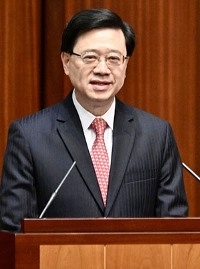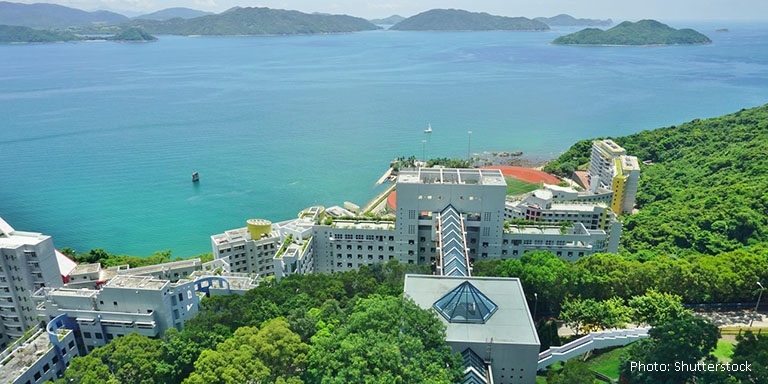Digitalisation is transforming Hong Kong’s traditional pillar industries – such as finance, trade, professional services and property. At the same time the city is seeking to further diversify its economy and is placing innovation & technology (I&T) front-and-centre in its development plans.
In recent years the Hong Kong Government has launched several I&T initiatives, accelerated by the need to adapt to the COVID-19 pandemic. Aggregating the progress made so far and laying out plans for the coming decade, the government late last year published the Hong Kong Innovation and Technology Development Blueprint.
R&D share expands
Released by the Innovation, Technology and Industry Bureau, the blueprint foresees rapid growth for Hong Kong’s I&T ecosystem. While research and development (R&D) expenditure accounted for just 0.74% of gross domestic product in 2014 and the blueprint predicts this will reach 2% by 2030, having reached 1.3% in 2025.
Gross Domestic Expenditure on R&D (GERD) will rise from HK$2,306 in 2014 to HK$9,000 by 2030. The bureau expects the ratio of public to private investment in R&D to switch from the mostly-public situation in 2014 to largely private by 2030. In 2014 the public to private ratio was 56:44 then grew to 58:42 by 2020 but the bureau expects it to reach 40:60 in 2030.
As with many such changes, the I&T revolution starts with thousands of small innovators dreaming of producing something big. The number of start-ups in co-working spaces, incubators and accelerators is set to rise from 1,065 in 2014 to 3,755 in 2021 and projected to reach 7,000 by 2030, with 30 having unicorn status (worth more than US$1 billion).
Talent counts
One recurring theme throughout the I&T drive has been to generate or draw technologically knowledgeable and skilled talents. The city is already well positioned, with five of its universities ranked in the top 100 worldwide. The Times Higher Education World University Rankings puts the University of Hong Kong at 31, Chinese University of Hong Kong at 45, Hong Kong University of Science and Technology (main picture) at 58, Hong Kong Polytechnic University at 79 and City University of Hong Kong at 99.
The city also ranks third worldwide in the Digital Intelligence Index report jointly published by Mastercard and the Fletcher School of the Tufts University in the United States in 2020.
In 2014 there were 25,450 I&T practitioners in Hong Kong’s workforce, just 9.15 workers per 1,000. By 2030 the government plans to boost his to at least 100,000, or more than 28 per 1,000.
Authorities plan to boost talent through a mix of encouraging science, technology, engineering and mathematics (STEM) studies in schools and universities, encouraging promising talents to move to the city from Mainland China, and drawing talent from overseas. Cooperation between Hong Kong and peer mainland cities, especially those in the Guangdong-Hong Kong-Macao Greater Bay Area (GBA) will further enlarge the talent pool.
STEM count to hit 35%
The government will encourage universities to offer more STEM courses, aiming for 35% of University Grants Committee (UGC) funded students to study STEM and 60% to study subjects relevant to Hong Kong’s development into the “eight centres/hubs” as stated in China’s 14th Five-Year Plan.
Mainland integration comprises another key direction for the blueprint – forming part of the technology development for China as a whole.

In last year’s Policy Address, Chief Executive John Lee put forward an array of initiatives to attract talent to Hong Kong, including launching the Top Talent Pass Scheme, relaxing the application arrangements of the General Employment Policy and the Admission Scheme for Mainland Talents and Professionals.
Apart from the talent hunt and integration with the mainland, the two key directions the blueprint prescribes are to enhance the I&T ecosystem and promote new industrialisation. While Hong Kong’s world-class universities and science parts, the relatively small markets and industrial base in the city mean that “1 to N” downstream development tends to be offshored. The blueprint outlines measures to keep all such development within Hong Kong as part of the city’s reindustrialisation.
Re-industrialisation

In 2014 the manufacturing sector accounted for just 1.2% of Hong Kong’s GDP. Authorities hope to boost this to 5% by 2030.
Just as all Hong Kong’s traditional industries such as finance and trade are undergoing digitisation, the entire mainstream economy is turning digital.
To facilitate this process, Hong Kong has launched the Smart City Blueprint or Hong Kong 2.0 to drive smart-city development.
This included the one-stop personalised digital services platform “iAM Smart”, enabling users to conduct authentication and digital signing for using online services such as vehicle licence renewal in a smart and more convenient way. So far, “iAM Smart” has 1.6 million registered users, providing more than 220 online services.
The government also launched the Faster Payment System (FPS) to facilitate electronic payment (e-payment), with the number of FPS registrations exceeding 10 million in March last year and the average daily turnover reaching about 1 million real-time transactions.
Funding innovation
Funding is one area where Hong Kong’s traditional industries (finance) can boost I&T. The amount invested in venture capital funds had reached HK$41.7 billion by 2021.
To encourage investment in I&T, Hong Kong Exchanges and Clearing (HKEx) permits listing of companies with weighted share-holding structures, letting founders retain control. Very long lead times mean many biotechnology firms need to wait years before bringing in revenues. To help these firms raise funds, pre-revenue listing is permitted in special circumstances.
The Government has set up various investment funds to reinforce Hong Kong’s status as an international financial, commercial and I&T centre.
These include the Hong Kong Growth Portfolio of about HK$22 billion, which was set up in 2021 to make strategic investments in projects with a Hong Kong nexus, including those related to the technology industry. The Strategic Tech Fund of $5 billion was set up in 2022 to invest in technology enterprises of strategic value to Hong Kong, or of considerable scale, as well as having good development potential. The GBA Investment Fund of $5 billion was set up last year to focus on projects in the GBA, including those related to technology industry that can benefit the industries and ecosystem development of Hong Kong.
To supply infrastructure and space as well as finance, the Innovation, Technology and Industry Bureau (ITIB) in Hong Kong will collaborate with the Office for Attracting Strategic Enterprises (OASES) and make use of the HK$30 billion Co-Investment Fund, the HK$5 billion Strategic Tech Fund to utilise the land provided in the Hong Kong-Shenzhen Innovation and Technology Park (HSITP) in the Lok Ma Chau Loop and in the vicinity of San Tin starting from next year.
Related link
Full blueprint
